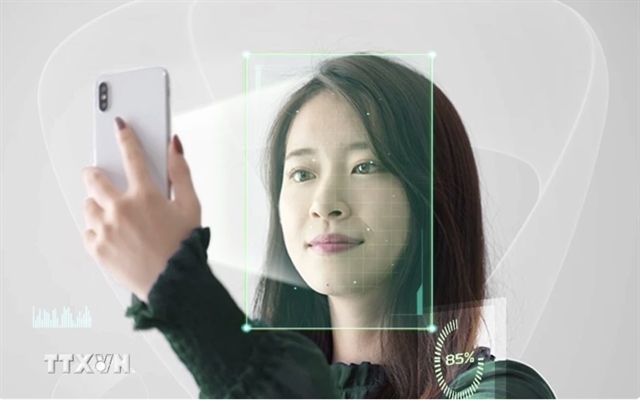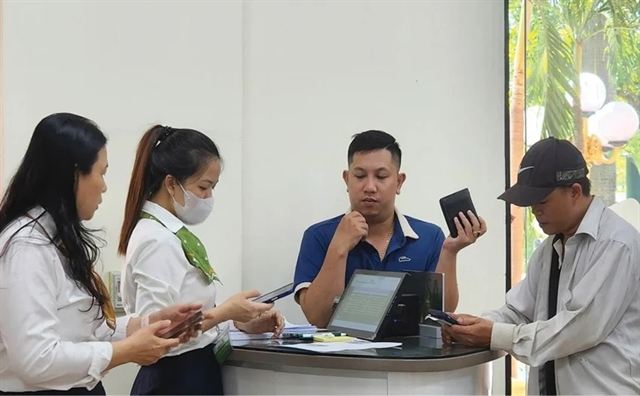 Society
Society

 |
| Customers fulfill the facial recognition biometric verification at a Vietcombank branch in HCM City. — VNA/VNS Photo |
HCM CITY — Customers are flocking to bank branches for biometric verification instead of doing it online on the weekend ahead of the deadline for a new banking regulation mandating biometric verification to take effect on January 1, 2025.
During the weekend (December 28-29), a majority of customers visiting bank transaction offices in HCM City were the elderly who were facing technical difficulties with their mobile devices, or individuals who had yet to update their citizen identification cards.
Vũ Ngọc Phát, 67, a customer from Gò Vấp District in HCM City, told Việt Nam News that due to his limited familiarity with technology, he rarely uses online transactions.
But to avoid disruptions in banking services, he spent his Sunday visiting the bank for biometric verification, he said.
Under the regulation by the State Bank of Vietnam (SBV), customers who fail to complete the facial recognition biometric verification will be prohibited from conducting electronic banking transactions from January 1, 2025.
In recent months, commercial banks have constantly urged their clients to update their facial images and chip-based identification cards by December 31, 2024, to avoid disruptions in online transactions.
For foreign clients who do not possess chip-based identification cards, bank personnel are available to assist with the registration of biometric information directly at the branches. The biometric data of these clients will be securely stored within the banks’ databases for future transactions.
To commence the biometric verification process online, users must log into their banking applications, select the ‘Update Information’ feature (nomenclature may vary by application), capture a facial scan, photograph both sides of their identification card, and use the phone’s NFC (Near Field Communication) reader to scan the chip-based identification card.
The process concludes with the confirmation of the information and the completion of OTP (One-Time Password) verification.
However, numerous users, particularly the elderly, have reported difficulties in updating their information.
In response, banks have indicated that customers may update their data either online via the banking application or by visiting bank branches equipped with NFC readers for in-person verification using their chip-based identification cards.
Banks have established hotlines and arranged for personnel to provide 24/7 assistance to facilitate the registration and utilisation of biometric authentication information.
Branches of the four major state-owned banks such as Vietcombank, VietinBank, Agribank, and BIDV have extended their operating hours beyond standard hours, including weekends, to accommodate customer needs.
Experts said traditional verification methods, such as passwords and OTPs, are increasingly vulnerable to cyber threats. In contrast, biometric verification, which is unique to each individual, offers enhanced security.
They have, however, noted the importance of safeguarding biometric data; without adequate security measures, this sensitive information could become targeted by cybercriminals. — VNS




